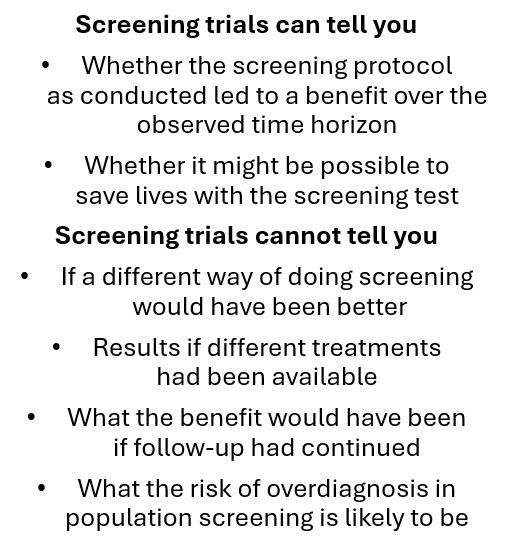Prostate Cancer Screening: Balancing Benefits and Harms in an Evolving Landscape
ACP 2025. Ruth Etzioni, PhD, discussed evidence-based approaches to screening for patients at average risk, start and stop criteria, MRI for follow-up screening, and other topics.
At the American College of Physicians Internal Medicine Meeting 2025, April 3-5, 2025, in New Orleans, Ruth Etzioni, PhD, professor, prostate cancer research program, division of public health sciences, Fred Hutch Cancer Center, Seattle, WA, presented compelling evidence on the nuanced approaches to prostate cancer screening, emphasizing personalization and the evolving objectives in this field.

Etzioni opened with a reminder that prostate cancer remains one of the most commonly diagnosed malignancies among men, yet screening strategies continue to be a subject of debate. The disease is responsible for approximately 29% of all new cancer diagnoses in men and is the second leading cause of cancer-related mortality, with an estimated 34,700 deaths annually in the US, according to the presentation. The lifetime risk of a prostate cancer diagnosis is 12.6%. The risk of dying from the disease, however, is significantly lower at 2.5%, she emphasized. Ethnic and racial disparities are clear with African American men experiencing both a higher incidence and mortality rate compared to other racial groups.
The Shifting Paradigm
To start, Etzioni outlined how prostate cancer screening objectives have evolved over time—from simply reducing mortality to more sophisticated goals that balance mortality reduction with minimizing overdiagnosis. The current focus has shifted toward avoiding the diagnosis of low-risk cases altogether while still identifying potentially fatal cancers, she explained.
Evidence from Screening Trials
The current recommendations are based on key findings from major screening trials, which Etzioni highlighted:
- The European Randomized Study of Screening for Prostate Cancer (ERSPC), conducted across six European countries with PSA screening every four years and a 3 ng/mL threshold, demonstrated a 20% reduction in prostate cancer deaths.
- The Göteborg trial, one of the ERSPC centers using biennial screening for men aged 50-64 (until age 69) with the same threshold, showed a more substantial 40% mortality reduction.
- In contrast, the US.Prostate, Lung, Colorectal, and Ovarian (PLCO) Cancer Screening Trial initiated in 1993 with annual PSA testing for 6 years (threshold 4 ng/mL) showed no reduction in deaths.
- The UK's CAP trial, which used only a single screening test, demonstrated a modest 8% reduction in deaths.
Etzioni cautioned against misinterpreting trial data regarding overdiagnosis—the detection of cancers that would never have become clinically significant during a patient's lifetime. She noted that excess cases in screening trial arms include both overdiagnosed cases and those that would have been detected clinically after the trial's conclusion, leading to inflated overdiagnosis estimates.

Modeling to Guide Screening Approaches
Since trials alone cannot determine optimal screening protocols, computational modeling has become instrumental in extending trial evidence to evaluate different screening approaches. Models using trial data can help estimate the underlying disease progression and assess the benefit-harm tradeoffs of various protocols. Etzioni referenced her own modeling work comparing alternative PSA-based screening strategies.
When to Start Screening
Age 50 or 55 has become the default to start screening, but Etzioni went on to qualify the guidance, pointing out that initiation of screening depends on the burden of potentially fatal disease. Starting before age 50 risks high cost and low yield among screened men although initiation younger than age 50 years may be reasonable in high-risk groups, particularly Black men, who show higher age-specific incidence of fatal prostate cancer compared to White men in pre-PSA era data.
She also referenced stored serum studies that suggest baseline PSA levels obtained in a man's mid-40s could help inform whether to start earlier. Men with higher values should be referred for annual screening, Etzioni suggested, and those with lower values to standard screening starting at age 50 or 55. She presented data from 2 studies from the mid-aughts that demonstrated that men with PSA values in the highest quartile at age 45 to 49 years have substantially higher 25-year risk of metastasis/death.
Screening Frequency and Thresholds
On the question of screening intervals, Etzioni noted:
- No randomized trials have directly compared different screening intervals
- Modeling suggests biennial screening retains approximately 80% of mortality reduction benefits while reducing overdiagnosis by up to one-third compared to annual screening
Regarding PSA thresholds:
- The historical threshold of 4.0 ng/mL has given way to the 3.0 ng/mL used in the ERSPC
- Age-specific reference ranges, proposed since 1993, may improve benefit-harm tradeoffs
- Current National Comprehensive Cancer Network (NCCN) guidelines suggest a 3 ng/mL threshold, with recommendations for multiparametric MRI (mpMRI) or biomarkers prior to biopsy
The Role of MRI and Biomarkers
Etzioni highlighted significant advances in using mpMRI and biomarkers as reflex tests after an elevated PSA:
- The PRECISION study and PROMIS study demonstrated that mpMRI could increase detection of clinically significant disease while reducing unnecessary biopsies
- The STHLM3 consortium showed benefits of mpMRI followed by targeted and standard biopsy
- The GÖTEBORG-2 trial found that targeted biopsy to MRI-suspicious lesions halved the risk of overdiagnosis while maintaining detection of clinically significant cancers
- Biomarkers serve similar functions to MRI but at lower cost and reduced precision, according to the AUA/SUO 2023 guidelines
When to Stop Screening
In older men, particularly those over the age of 70, Etzioni encouraged a personalized approach to prostate cancer screening. Given the risks of overdiagnosis and overtreatment, she advised caution in recommending routine screening in this population. She cited evidence from the SPCG-4 trial, which compared surgery with watchful waiting, and suggests that surgical intervention offers little to no benefit for older patients.
To minimize unnecessary interventions, Etzioni recommended a higher PSA threshold or secondary testing to identify clinically significant disease. In addition, findings from stored-serum studies indicate that screening may be safely discontinued in men with consistently low PSA levels. Specifically, men with a PSA level below 1.0 ng/mL at age 60 or below 2.0 ng/mL at age 70 may not require further screening.
Management of Elevated PSA
The first step in managing an elevated PSA Etzioni said is to order repeat testing to confirm the result and to reduce the risk of unnecessary interventions. Factors to consider include patient’s age, race, comorbidities, history of benign prostatic hyperplasia (BPH), and access to care, as well as individual preferences. Depending on the clinical scenario, further evaluation may involve referral to a urologist, secondary biomarker testing, or multiparametric mpMRI to better characterize the risk of clinically significant disease. Importantly, discuss with patients that that not all elevated PSA values warrant aggressive follow-up, nor do all diagnoses necessitate immediate or intensive treatment.
Etzioni emphasized that there is no single best evidence-based approach, making personalization and patient preference accommodation essential components of screening decisions.